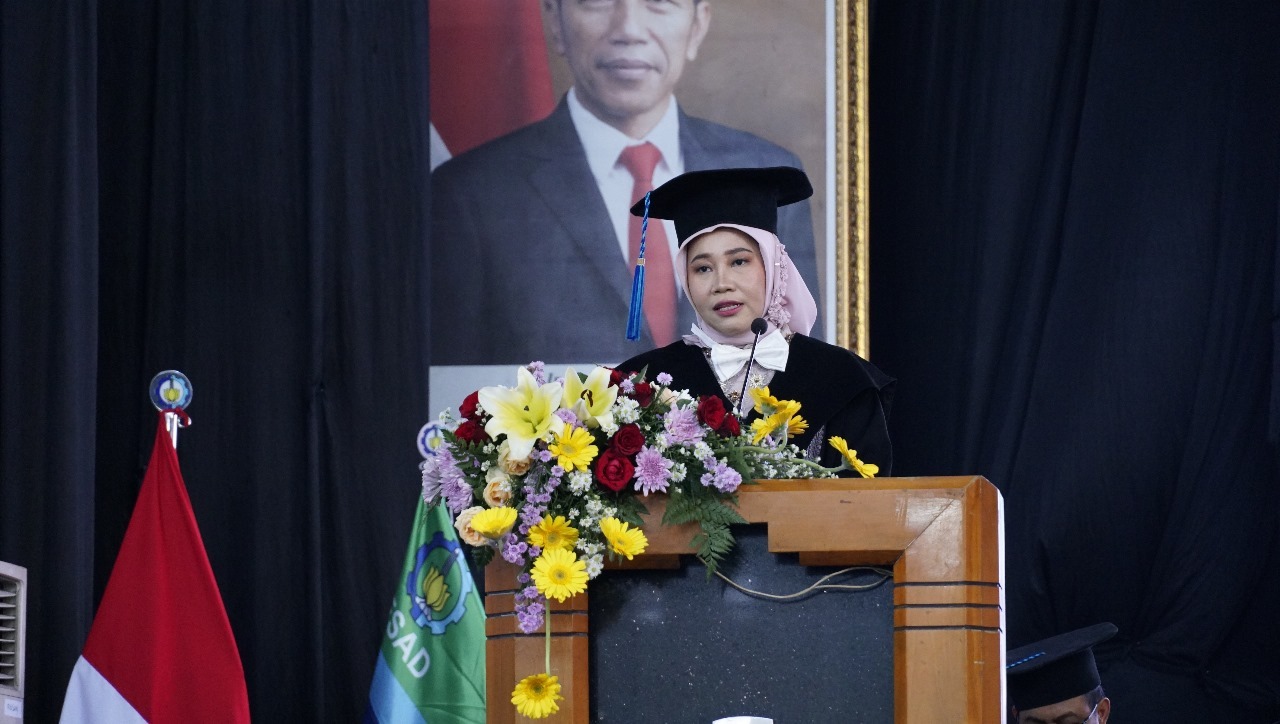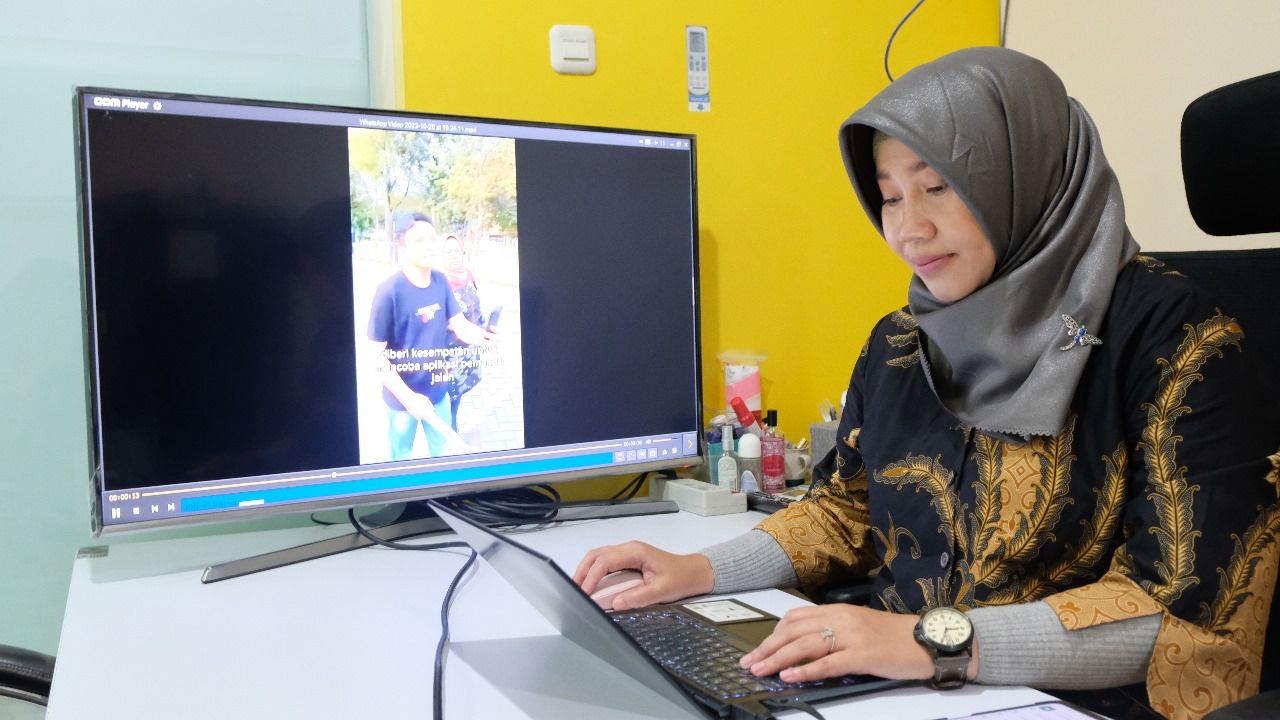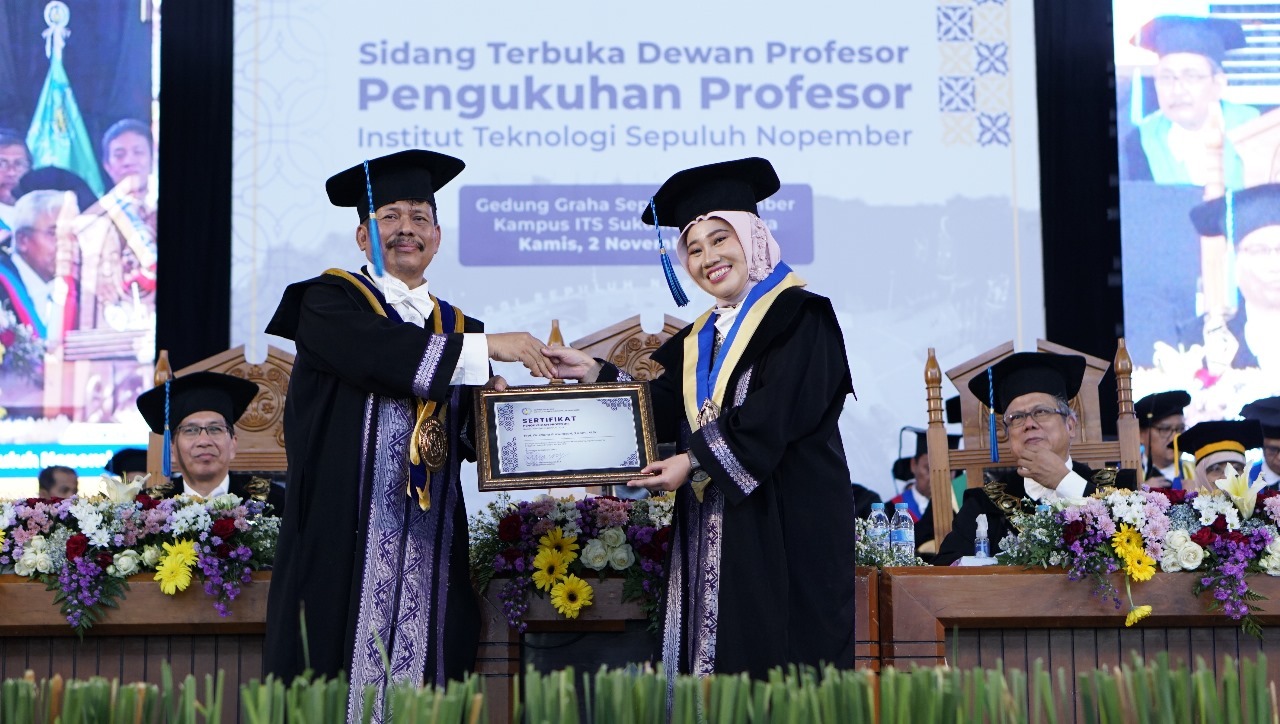Uncovering People’s Behavior, ITS Professor Examines Potential of NLP Technology

Prof. Dr. Ir Diana Purwitasari SKom MSc from the Department of Informatics ITS when delivering her scientific oration on NLP technology
ITS Campus, ITS News – Advances in Natural Language Processing (NLP) technology are increasingly expanding its ability to understand natural human language. This became the main focus of the 190th Professor of the Institut Teknologi Sepuluh Nopember (ITS) Prof Dr Ir Diana Purwitasari SKom MSc, who deeply analyzed the potential of NLP technology to reveal community behavior through understanding human language.
Diana revealed that NLP technology has become a major highlight among researchers in the current era. This is due to its increasingly significant capabilities, especially in utilizing the abundant textual data on the internet to analyze and process natural human language. “The most obvious example is the existence of ChatGPT, which is able to respond to questions quickly using human language,” she said.
Continuing his dissertation research, the alumnus of Saga University, Japan, sets the boundaries of analysis that focuses on how to determine whether someone can be considered an expert. This approach is done by identifying the characteristics and specifications that determine a person’s expertise in a field of research. “The results of this research can also be used to analyze human behavior,” she added.

Prof Dr Ir Diana Purwitasari SKom MSc, the 190th Professor of ITS when analyzing the determination of a person’s expertise using NLP technology in her research
The professor of the Department of Informatics ITS also emphasized that the challenge of the existence of NLP is how to optimize its potential to understand and respond to human language more accurately. Therefore, several analysis methods are used, including text processing, text mining, web mining, information retrieval, computational intelligence, and social network analysis.
Based on these methods, Diana successfully developed dynamic features resulting from behavior analysis represented in the form of a graph. This graph modeling is flexible and can be applied to various types of data, including to analyze the dynamic aspects of the user object of social media platform X (Twitter). “This identification does not only understand the interaction patterns of people on social platforms, but can also explore entrepreneurial potential,” she said.

Chairman of the ITS Professors Council Prof Dr Imam Robandi MT (left) when handing over the inaugural certificate of the 190th ITS Professor to Prof Dr Ir Diana Purwitasari SKom MSc
Not limited to graph features, another approach is to consider key words through data clustering using the Latent Dirichlet Allocation (LDA) method. LDA can analyze the chance of a word co-occurring with other words, thus enabling accurate identification of expertise. To increase the utility of the analysis, Diana also developed visualizations to aid expert search.
Overall, Diana’s dedication has contributed greatly to ITS, the government, and the people of Indonesia. Currently, Diana is focusing on analyzing text processing language specifically for regional languages in Indonesia. With this approach, she hopes that the results of her analysis can become valuable recommendations for researchers to help in uncovering human behavior related to certain issues. (ITS PR)
Reporter: Lathifah Sahda
Related News
-
ITS Wins 2024 Project Implementation Award for Commitment to Gender Implementation
ITS Campus, ITS News —Not only technology-oriented, Institut Teknologi Sepuluh Nopember (ITS) also show its commitment to support gender
January 21, 2024 16:01 -
ITS Professor Researched the Role of Human Integration in Sustainable Architecture
ITS Campus, ITS News –The developing era has an impact on many aspects of life, including in the field
January 21, 2024 16:01 -
ITS Sends Off Group for Joint Homecoming to 64 Destination Areas
ITS Campus, ITS News — Approaching Eid al-Fitr, the Sepuluh Nopember Institute of Technology (ITS) is once again facilitating academics who want
January 21, 2024 16:01 -
ITS Expert: IHSG Decline Has Significant Impact on Indonesian Economy
ITS Campus, ITS News — The decline in the Composite Stock Price Index (IHSG) by five percent on March 18,
January 21, 2024 16:01
